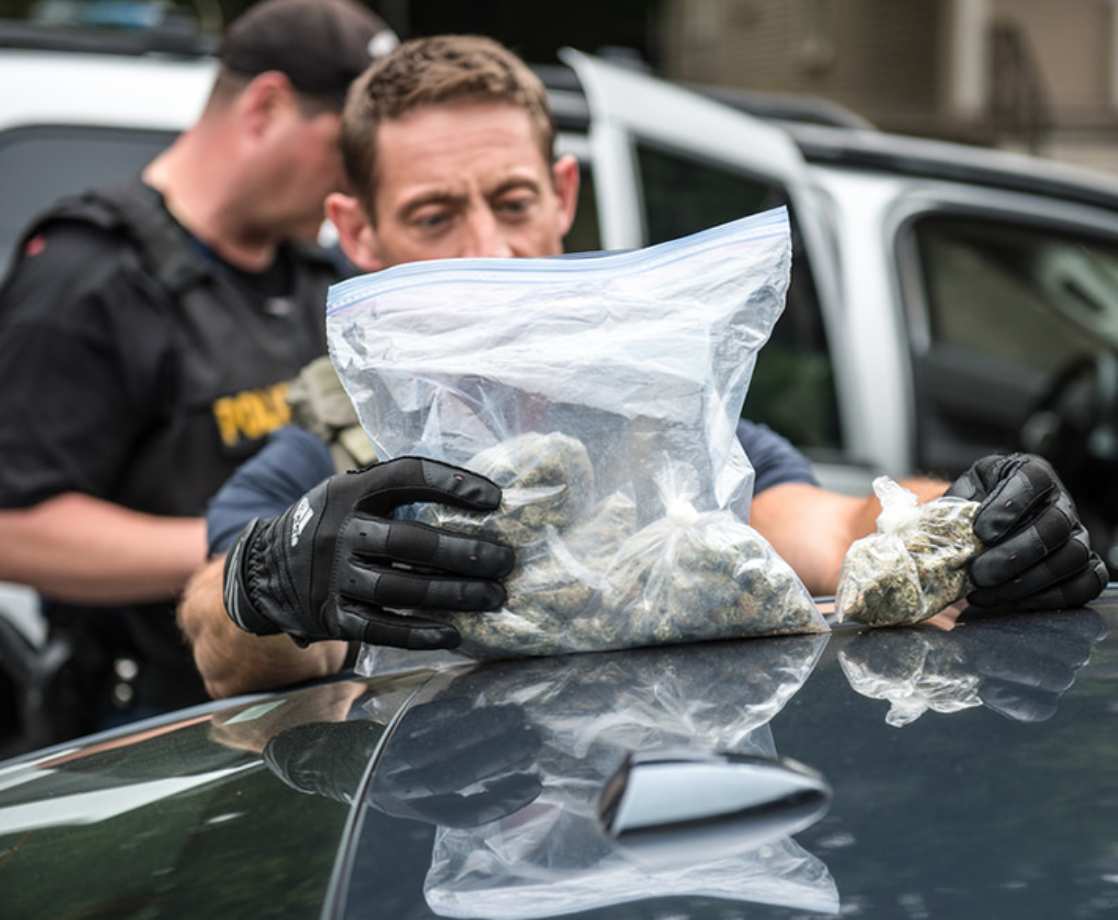For the last 80 years of cannabis prohibition, cops all across the nation have relied on the odor of marijuana as an excuse to conduct warrantless searches. In nearly every US jurisdiction, police are allowed to use the “in plain smell” doctrine, a law enforcement policy that gives cops the authority to search vehicles, homes, or people if they “detect” the scent of marijuana.
In some cases, police will use this doctrine to justify a search that turns up illegal firearms, cocaine, or other illegal activity — but no pot. Many of these cases will go to trial, despite the fact that police could not have actually smelled weed if it was not present.
“There’s a lot of anecdotal evidence that at least some officers say they smell it when they don’t,” said Alex Kreit, cannabis law expert and visiting researcher at the Ohio State University Drug Enforcement and Policy Center, to Leafly. Kreit added that the “fact pattern” established when cops claim to smell weed, but don’t actually find any, “suggests that they just wanted to search the car.”
In 2017, one Colorado man set out to challenge the legitimacy of the “in plain smell” doctrine. The case began when the anonymous man, who calls himself “Mike,” was pulled over by Colorado State Trooper Shane Gosnell for driving slowly in the passing lane.
“I could immediately observe the odor of raw marijuana coming from the vehicle,” Gosnell wrote in his police report, Leafly reports. The officer used this excuse to conduct a vehicle search, which uncovered thousands of dollars of cash and two duffle bags filled with 52 pounds of weed stuffed in double vacuum-sealed bags. Gosnell arrested Mike for possession with intent to distribute and improper use of the passing lane.
Mike and his legal team challenged the officer’s probable cause by hiring two scientists to refute the odiferous justification of his search. Dr. Avery Gilbert, a scientist who specializes in odors, and Dr. Joseph DiVerdi, a chemistry professor at Colorado State University, were hired to examine the evidence. The two researchers took air samples inside evidence bags containing the vacuum-sealed weed and in the duffle bags that contained the weed.
Back in their lab, the researchers tested the air samples for concentrations of terpenes, the cannabis compounds that give weed its odor. All of the samples found that terpene levels were too low to be detected by humans — implying that State Trooper Gosnell was lying when he said he smelled pot in Mike’s car.
The case actually never went to trial, though. Mike made a deal with prosecutors in which he pleaded guilty to possession with intent to distribute, receiving a two-year deferred sentence, a $13,500 fine, and 48 hours of community service.
Unable to present their findings in court, Gilbert and DiVerdi conducted a study to publicize their findings. The researchers selected two pungent strains of flower and placed them in five different packaging alternatives — a sandwich bag, a thin plastic produce bag, a pop-top canister, a vacuum-sealed bag inside another vacuum-sealed bag, or just loose in a glass bowl.
21 untrained observers were blindfolded, then presented with two different buckets, one containing weed packaged in one of the five alternatives, and one containing similar packaging with no weed. Observers were asked to identify which bucket contained the weed using only their sense of smell alone.
The results of this study, which will be published in this month’s issue of Science & Justice, found that every observer was easily able to detect the weed if it was loose or in the sandwich or produce bags. The dispensary-style container fooled some of the participants, but most were still able to correctly detect the smell of weed.
But, for the double vacuum-sealed bags, observers were unable to detect the smell of cannabis. “The results showed that open and casually packaged cannabis was identified with high accuracy, while material packaged in doubly vacuum-sealed plastic was correctly identified at rates no different from chance,” the study concludes.
The study provides evidence that the odor of cannabis is not as easily detectable to humans as cops have been claiming. In Mike’s case, Gilbert told Leafly that the results of his study prove that it is “unlikely as hell” that the cop was actually able to smell the double-sealed weed from outside of the car.
In most states, cops still continue to use the “in plain smell” doctrine to justify searches, but this practice is finally coming to an end thanks to the recent legalization of hemp. Legal hemp smells the same as illegal weed, making it impossible for cops to smell the difference.











